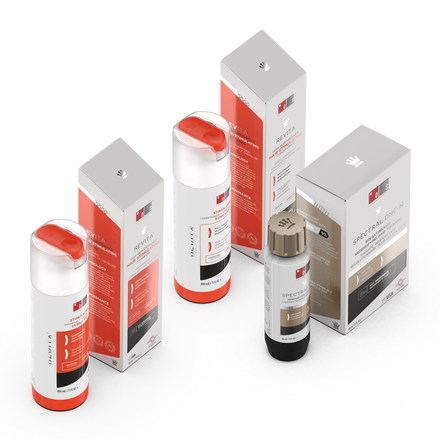Avoid harsh hair styling treatments - Regular (and even temporary) styling treatments can wreak havoc on your scalp. To keep the hair that you do still have on your head, be kind to your follicles. Frequent shampooing, hair dying, hot irons, permanents, and even tight hairstyles can worsen hair loss and prolong hair regrowth.
Decrease stressors - Stressful events and consistently high levels of stress can worsen hair loss and prevent regrowth. People often temporarily lose a significant amount of hair when they experience physical, mental, or emotional stress. For example, it is common for people to lose hair after surgery, trauma, loss of a loved one, or even a significant life event. Hair loss from stress tends to regrow once the stressor resolves. Even if you haven’t had severe physical or mental stress, consistent stress in your everyday life can prevent hair regrowth.
Nurture your hair - Use high-quality hair products that are designed to strengthen your existing hair and stimulate hair regrowth. Many hair brands claim to do these things, but few actually contain the essential ingredients to reverse hair loss. Look for products that include:
- Agents that block DHT, or dihydrotestosterone. DHT is one of the leading causes of male pattern hair loss. Azelaic acid (can be found in DNC-N) can block the conversion of follicular testosterone to DHT in your hair follicles.
- Ingredients that stimulate hair growth including adenosine, caffeine, and retinol
- Compounds that prevent the overgrowth of the fungus Malassezia, which is a common culprit of hair loss
- Anti-inflammatory agents including azelaic acid and TriCopper peptides
Nourish your hair - Just like our bodies, our hair also needs the right nutrients for growth. Hair loss can also be a sign that you are deficient in certain key nutrients. If you are struggling to regrow hair on the crown of your head, don’t forget the power of a healthy diet. Make sure to eat foods rich in protein, magnesium, iron, zinc, and vitamin D. For example, zinc is found in several protein-rich foods, including lean meat, seafood, whole grains, eggs, nuts, and seeds. Supplements that aim to help hair growth can also give you that extra leg up to reduce fallout. You can shop for supplements specifically marketed to people with hair loss. However, many of these supplements do not contain the essential ingredients necessary to regrow your hair. Consider trying the Revita Nutraceutical Tablets for Hair Growth Support.
Try over-the-counter hair regrowth products - Minoxidil, (commonly known as Rogaine), has been around since the 1950s and has helped many people restore hair on their head. However, hair regrowth technology has seen significant advancements, especially in recent years. A newer hair regrowth compound called Nanoxidil is a potent topical treatment for hair loss that suppresses DHT, opens cellular ion channels in follicles, prevents perifollicular fibrosis, increases endothelial growth factors, and prevents chronic inflammation. Products with nanosome technology can deliver these substances more effectively compared to older chemical compounds. Compare Nanoxidil vs. Minoxidil here.
Consult a dermatologist - Male and female-pattern baldness are often slow to develop and gradually worsen over time. Consider meeting with a doctor that specializes in hair loss to learn about the medical management of androgenic alopecia. Sometimes, a doctor may recommend finasteride, which is a prescriptive medication for men that can help regrow hair. As with any medication, finasteride does carry side effects, including sexual dysfunction, which can decrease your quality of life. Also, you will continue to experience hair loss when you stop taking finasteride. Besides medication, your doctor can also run blood tests to see if you have any other health conditions that may contribute to your hair loss.
While crown hair can sometimes be slower to grow, technology and medicine continue to advance. Until we have a cure for male and female pattern hair loss, remember that early action is the best solution for any pattern and cause of hair loss.










